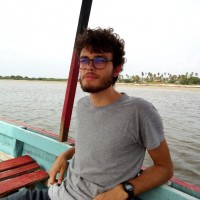Présentation
Existe-t-il une autre civilisation dans la galaxie ? Ou bien deux autres ? Ou même – soyons fous – des centaines d’autres ? La Vie grouille-t-elle dans l’Univers ? Apparaît-elle partout ? Et puis au fait, la Vie, c’est quoi ? Mais surtout : comment répondre à toutes ces questions ? Nous explorerons nos connaissances actuelles de ce que l’on nomme l’astrobiologie à travers l’équation de Drake, calculant le nombre de civilisations dans la galaxie : réponses dans l’exposé.
Ressources
Sources
Historique du pluralisme / Extraterrestrial life (anglais)
Anaximandre
Aristote
Muhammad Al-Baqir (anglais)
Copernic
Kepler
Entretien sur la pluralité des mondes (Wikipedia, livre)
Galilée
Terre rare
Paradoxe de Fermi
Doppler
Détection des Exoplanètes (Wikipedia, Le Monde)
– Figure Détection Alpha Centauri b Anglada-Escudé, Guillem, et al. « A terrestrial planet candidate in a temperate orbit around Proxima Centauri. » Nature 536.7617 (2016): 437-440.
– Imagerie directe HR8799 Marois, Christian, et al. « Direct imaging of multiple planets orbiting the star HR 8799. » Science 322.5906 (2008): 1348-1352.
Zone Habitable / Zone Habitable Galactique
Rotation synchrone
– Rotation synchrone de Alpha Centauri b Turbet, Martin, et al. « The habitability of Proxima Centauri b-II. Possible climates and observability. » Astronomy & Astrophysics 596 (2016): A112.
Obliquité de la Terre et de Mars:
– Neron de Surgy, O., and J. Laskar. « On the long term evolution of the spin of the Earth. » Astronomy and Astrophysics 318 (1997): 975-989.
– Laskar, Jacques, and Philippe Robutel. « The chaotic obliquity of the planets. » Nature 361.6413 (1993): 608.
Environnements terrestres extrêmes habités :
– Parro, Victor, et al. « A microbial oasis in the hypersaline Atacama subsurface discovered by a life detector chip: implications for the search for life on Mars. » Astrobiology 11.10 (2011): 969-996.
– Mikucki, Jill A., and John C. Priscu. « Bacterial diversity associated with Blood Falls, a subglacial outflow from the Taylor Glacier, Antarctica. » Applied and Environmental Microbiology 73.12 (2007): 4029-4039.
Ecosystème des sources hydrothermales
Environnements « habitables » du système solaire :
– Océan souterrain de la Lune
– Vie sur Mars
Ce qu’est la vie :
– Sélection de lectures
– Qu’est-ce que la vie ?
Entropie
Omniprésence des composés organiques simples
– Capaccioni, F., et al. « The organic-rich surface of comet 67P/Churyumov-Gerasimenko as seen by VIRTIS/Rosetta. » Science 347.6220 (2015): aaa0628.
– Sephton, Mark A. « Organic compounds in carbonaceous meteorites. » Natural product reports 19.3 (2002): 292-311.
– University of Cologne – Universitaet zu Koeln. « Precursors of life-enabling organic molecules in Orion Nebula unveiled by Herschel Space Observatory. » ScienceDaily. ScienceDaily, 5 March 2010.
Origine de la Vie (Wikipedia, Youtube)
– Djokic, Tara, et al. « Earliest signs of life on land preserved in ca. 3.5 Ga hot spring deposits. » Nature communications 8 (2017): 15263.
– Boussau, Bastien, et al. « Parallel adaptations to high temperatures in the Archaean eon. » Nature 456.7224 (2008): 942
Grotzinger, John P., et al. « A habitable fluvio-lacustrine
environment at Yellowknife Bay, Gale Crater, Mars. » Science
343.6169 (2014): 1242777.
Interactions grande échelle :
– Grande Oxydation
– Stromatolithe
– Lovelock, James E., and Lynn Margulis. The Gaia Hypothesis. na, 1996.
– Chopra, Aditya, and Charles H. Lineweaver. « The case for a Gaian bottleneck: the biology of habitability. » Astrobiology 16.1 (2016): 7-22.

